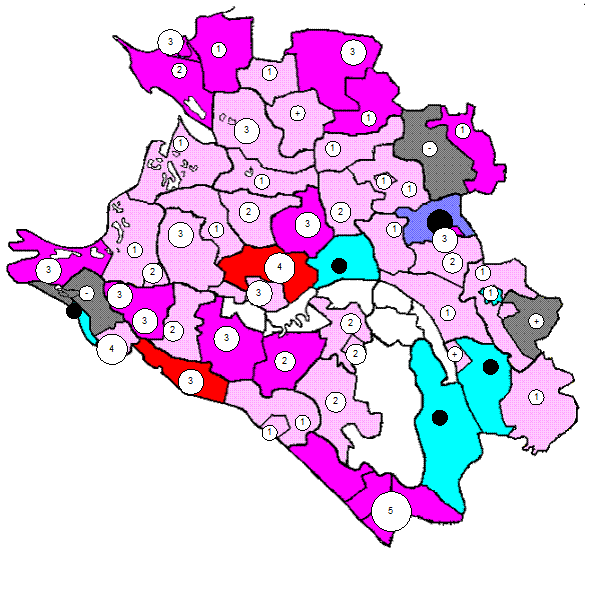Mesopotamia
Mesopotamia (from the Greek meaning "land between the rivers") is the area of the Tigris-Euphrates river system, along the Tigris and Euphrates rivers, largely corresponding to modern Iraq, as well as some parts of northeastern Syria,[2] some parts of southeastern Turkey, and some parts of the Khūzestān Province of southwestern Iran. Commonly known as the "cradle of civilization", Bronze Age Mesopotamia included Sumer, Akkadian, Babylonian and Assyrian empires. In the Iron Age, it was ruled by the Neo-Assyrian Empire and Neo-Babylonian Empire, and later conquered by the Achaemenid Empire. It mostly remained under Persian rule until the 7th century Islamic conquest of the Sassanid Empire. Under the Caliphate, the region came to be known as Iraq. The regional toponym Mesopotamia (< meso (μέσος) = middle and potamia < ποταμός = river, literally means "between two rivers") was coined in the Hellenistic period without any definite boundaries, to refer to a broad geographical area and probably used by the Seleucids. The term biritum/birit narim corresponded to a similar geographical concept and coined at the time of the Aramaicization of the region, in the 10th century BCE. It is however widely accepted that early Mesopotamian societies simply referred to the entire alluvium as kalam in Sumerian (lit. "land"). More recently terms like "Greater Mesopotamia" or "Syro-Mesopotamia" have been adopted to refer to wider geographies corresponding to the Near East or Middle East. The later euphemisms are Eurocentric terms attributed to the region in the midst of various 19th century Western encroachments. Mesopotamia encompasses the land in between the Euphrates and Tigris rivers; both of which have their headwaters in the mountains of Armenia in modern Turkey. Both rivers are fed by numerous tributaries, and the entire river system drains a vast mountainous region. Overland routes in Mesopotamia usually follow the Euphrates because the banks of the Tigris are frequently steep and difficult. The climate of the region is semi-arid with a vast desert expanse in the north which gives way to a 6,000 square mile region of marshes, lagoons, mud flats, and reed banks in the south. In the extreme south the Euphrates and the Tigris unite and empty into the Persian Gulf. The arid environment which ranges from the northern areas of rain fed agriculture, to the south where irrigation of agriculture is essential if a surplus energy returned on energy invested (EROEI) is to be obtained. This irrigation is aided by a high water table and by melted snows from the high peaks of the Zagros Mountains and from the Armenian cordillera, the source of the Tigris and Euphrates Rivers, that give the region its name. The usefulness of irrigation depends upon the ability to mobilize sufficient labor for the construction and maintenance of canals, and this, from the earliest period, has assisted the development of urban settlements and centralized systems of political authority. Agriculture throughout the region has been supplemented by nomadic pastoralism, where tent dwelling nomads move herds of sheep and goats (and later camels) from the river pastures in the dry summer months, out into seasonal grazing lands on the desert fringe in the wet winter season. The area is generally lacking in building stone, precious metals and timber, and so historically has relied upon long distance trade of agricultural products to secure these items from outlying areas. In the marshlands to the south of the country, a complex water-borne fishing culture has existed since pre-historic times, and has added to the cultural mix. Periodic breakdowns in the cultural system have occurred for a number of reasons. The demands for labour has from time to time led to population increases that push the limits of the ecological carrying capacity, and should a period of climatic instability ensue, collapsing central government and declining populations can occur. Alternatively, military vulnerability to invasion from marginal hill tribes or nomadic pastoralists have led to periods of trade collapse and neglect of irrigation systems. Equally, centripetal tendencies amongst city states has meant that central authority over the whole region, when imposed, has tended to be ephemeral, and localism has fragmented power into tribal or smaller regional units. These trends have continued to the present day in Iraq.
|




